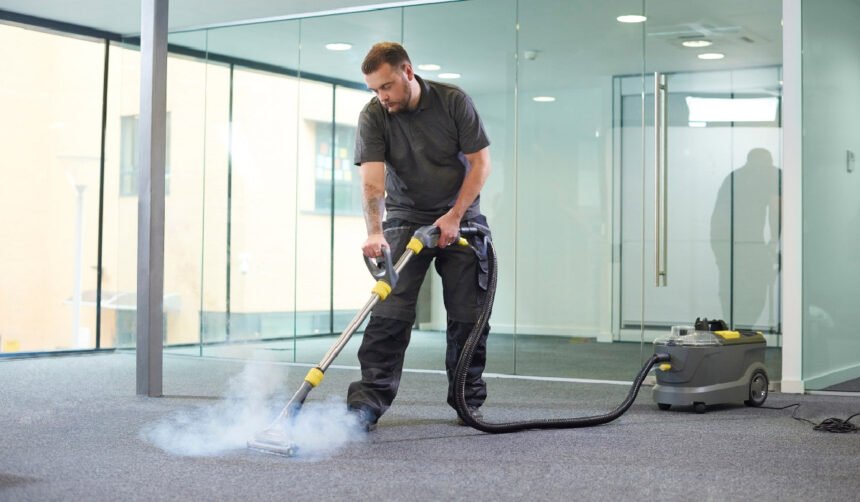In today’s fast-paced world, cleanliness is no longer just a matter of aesthetics but a cornerstone of healthy and hygienic living. As people become increasingly conscious of the chemicals in traditional cleaning products, more are turning toward safer, eco-friendly alternatives. Among these, steam cleaning has emerged as a highly effective method, gaining popularity in homes, offices, and commercial spaces.
This method of cleaning, which uses heated water vapor to lift dirt and kill germs, is not only chemical-free but also versatile, capable of sanitizing a wide range of surfaces. Whether you’re tackling stubborn stains, refreshing upholstery, or disinfecting tiles, steam cleaning offers an efficient and sustainable solution. In this article, we’ll delve deep into the science, benefits, applications, and considerations of using steam to clean, giving you a comprehensive understanding of why this technique is increasingly being adopted worldwide.
Understanding the Science Behind Steam Cleaning
At its core, steam cleaning is a method that uses water vapor heated to high temperatures (usually between 120°C to 180°C) to loosen dirt, kill bacteria, and eliminate allergens. The steam is produced by a specialized machine that boils water and releases it as pressurized vapor through a nozzle or attachment.
The high-temperature steam penetrates pores on hard surfaces and fibers on soft surfaces, reaching places that traditional mops and sprays often cannot. The moisture helps dislodge grime and oil, while the heat effectively neutralizes bacteria, viruses, mold spores, and dust mites. Unlike conventional methods that rely heavily on detergents or disinfectants, steam cleaning uses the power of water alone, making it an environmentally friendly alternative.
Benefits of Steam Cleaning
Steam cleaning provides a wide array of benefits, making it an attractive option for both residential and commercial settings.
1. Chemical-Free Cleaning
One of the most significant advantages of steam cleaning is its reliance solely on water. No additional chemicals or soaps are necessary, which means fewer pollutants released into the air or wastewater system. This is especially valuable for families with children, pets, or allergy sufferers, as it minimizes exposure to potentially harmful substances.
2. Deep and Thorough Sanitization
The high temperatures involved in steam cleaning can eliminate up to 99.9% of common bacteria, viruses, and household pests like dust mites. It’s an excellent method for achieving a higher level of hygiene, particularly in kitchens, bathrooms, and other high-contact areas.
3. Versatility Across Surfaces
Steam cleaning isn’t limited to just floors or tiles. It can be used on a wide variety of surfaces including:
- Carpets and rugs
- Upholstered furniture
- Mattresses and bedding
- Tile and grout
- Kitchen appliances
- Glass and mirrors
- Curtains and drapes
- Car interiors
With the right attachments, one device can handle numerous cleaning tasks throughout the home or workplace.
4. Eco-Friendly and Sustainable
By eliminating the need for chemical cleaning agents and reducing water waste compared to conventional mopping or scrubbing, steam cleaning supports more sustainable practices. It also reduces the number of disposable items like paper towels or wipes.
5. Cost-Effective in the Long Run
Although the upfront cost of purchasing a steam cleaner might seem high, it quickly pays for itself. You no longer need to continuously purchase cleaning agents, and since it extends the life of furniture, carpets, and other surfaces by maintaining cleanliness, it helps save money over time.
Common Applications of Steam Cleaning
Steam cleaning’s flexibility allows it to be used in various settings, each benefiting from its thorough and non-toxic cleaning capabilities.
Residential Cleaning
In homes, steam cleaning is ideal for people seeking a deeper clean without resorting to strong chemicals. It’s particularly useful in:
- Bathrooms: Sanitizing sinks, toilets, tubs, and tiles.
- Kitchens: Cleaning ovens, stovetops, and countertops.
- Living areas: Removing pet hair, dust mites, and stains from upholstery and carpets. For those in California, choosing professional upholstery cleaning Los Angeles services ensures a fresher, healthier home environment while keeping furniture looking its best.
Commercial and Industrial Use
Offices, hotels, restaurants, and healthcare facilities have adopted steam cleaning for its ability to sanitize high-traffic and high-contact areas. It’s a preferred method for:
- Cleaning large floor areas efficiently
- Sanitizing shared equipment and furniture
- Maintaining hygiene standards in food service or medical settings
Vehicle Detailing
Steam cleaning is increasingly popular in auto detailing. It helps clean seats, dashboards, vents, and carpets without soaking or damaging materials. Plus, it disinfects interiors without leaving chemical residues, making it a favorite among car owners.
Choosing the Right Steam Cleaning Machine
Not all steam cleaners are created equal. Selecting the right one depends on your specific needs. There are three main types of steam cleaners:
1. Handheld Steam Cleaners
These are small, portable, and great for light-duty tasks like cleaning small surfaces, bathrooms, or kitchen appliances. They’re convenient and easy to store but might not have the power or water capacity for large jobs.
2. Steam Mops
Designed primarily for cleaning floors, steam mops are easy to maneuver and come with pads that absorb dirt and debris. Some models also include attachments for above-floor cleaning.
3. Cylinder or Canister Steam Cleaners
These are the most versatile and powerful type, offering higher steam pressure and a wide range of attachments for multi-surface cleaning. Ideal for whole-house or commercial use, they can handle everything from floors to upholstery.
When choosing a steam cleaner, consider factors such as:
- Water tank size
- Heat-up time
- Steam pressure and temperature
- Included attachments
- Ease of use and maintenance
Tips for Effective Steam Cleaning
To get the most out of your steam cleaner, follow these best practices:
– Pre-Clean the Area
Remove loose dirt, dust, or debris before using your steam cleaner. While the steam will sanitize and loosen grime, it won’t vacuum or sweep up large particles.
– Use the Right Attachment
Most steam cleaners come with various nozzles, brushes, and cloths. Choose the right one for the job—using a small brush for grout, for example, or a microfiber cloth for windows.
– Don’t Over-Saturate
Although steam evaporates quickly, excessive steam on certain materials like hardwood or electronics can cause damage. Always test in an inconspicuous area first and adjust settings as needed.
– Clean and Maintain Your Machine
Regularly descaling your steam cleaner and cleaning attachments will keep it working efficiently and extend its life.
Steam Cleaning vs. Traditional Methods
While traditional cleaning with chemicals, mops, and sponges may seem effective, they often fall short in terms of deep sanitization and environmental impact. Steam cleaning offers a superior alternative, especially when hygiene, safety, and sustainability are priorities.
Where traditional mopping might spread bacteria or leave chemical residues, steam cleaning actually neutralizes harmful organisms and leaves no trace behind. And because no extra products are needed, the process is simpler and more cost-effective in the long run.
Is Steam Cleaning Right for You?
Although steam cleaning is incredibly effective, it may not be suitable for every material or surface. Delicate fabrics, unsealed wood, or some painted surfaces may be damaged by high heat and moisture. It’s important to check manufacturer guidelines before applying steam to sensitive items.
That said, the wide applicability of steam cleaning across environments and its many advantages make it a compelling choice for anyone seeking a deeper, greener clean. Whether you’re managing a busy household or running a commercial enterprise, the benefits of this cleaning method are hard to ignore.
Final Thoughts
As the demand for cleaner, safer, and more sustainable environments continues to grow, steam cleaning stands out as one of the most effective tools available. With its ability to sanitize without chemicals, clean deeply without leaving residues, and adapt to countless applications, it’s a valuable asset in any cleaner’s toolkit.
Adopting steam cleaning into your routine not only elevates the standard of cleanliness but also aligns with eco-conscious living. It’s an investment in health, hygiene, and the long-term care of your space and possessions.
Whether you’re considering it for the first time or looking to upgrade your current system, steam cleaning offers a modern, efficient, and responsible solution to today’s cleaning challenges.
For More Information, Visit Dotmagazine








